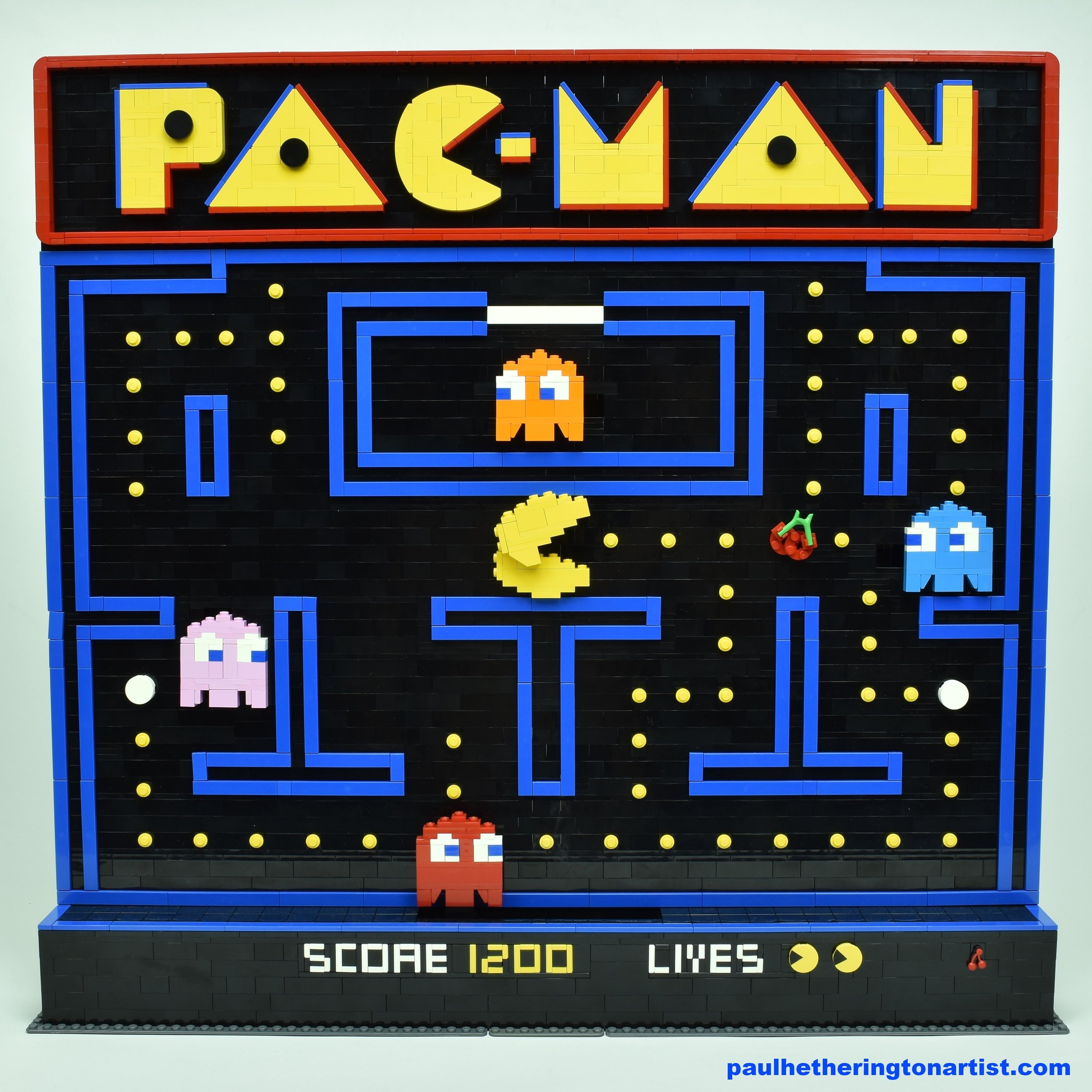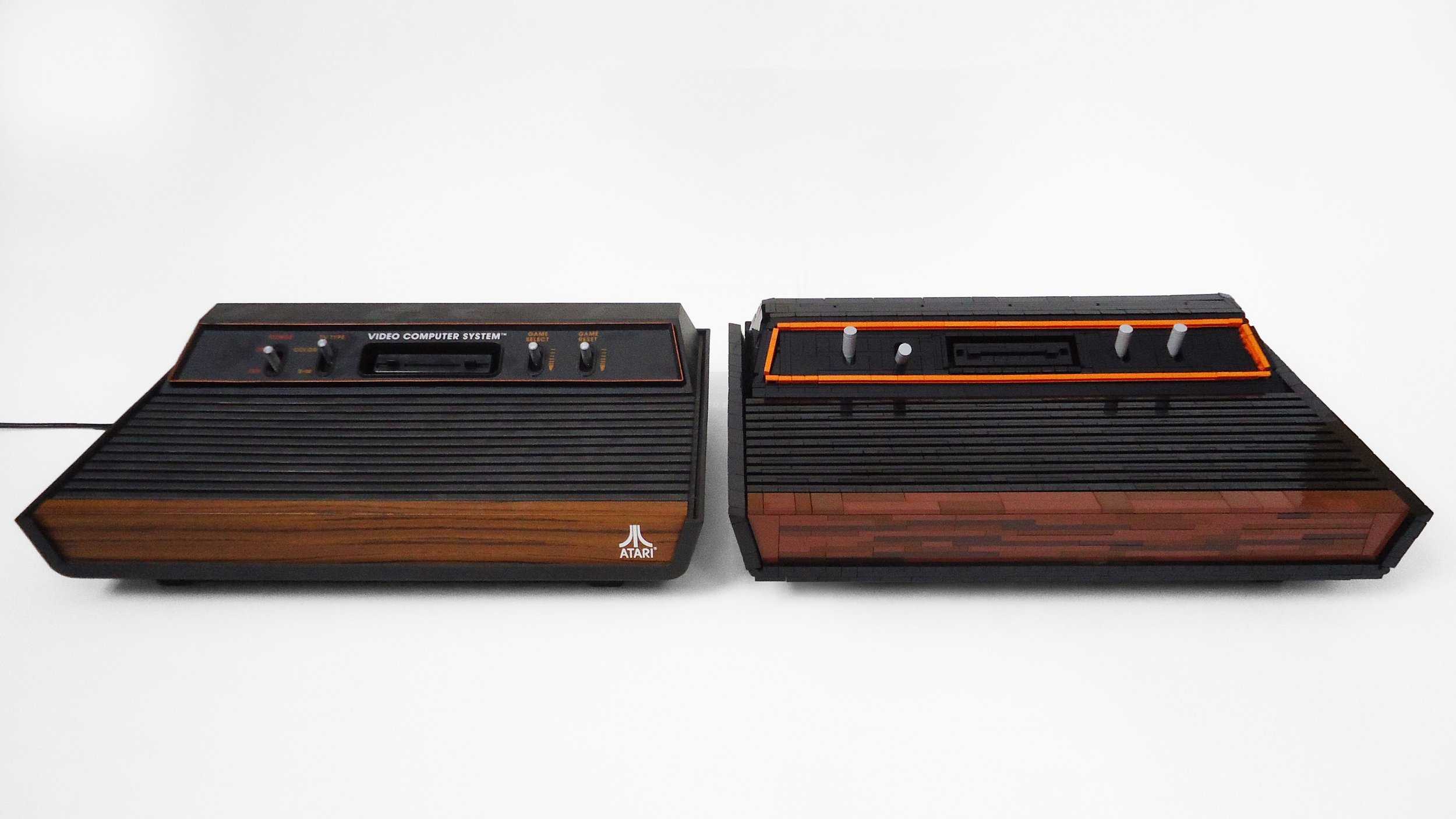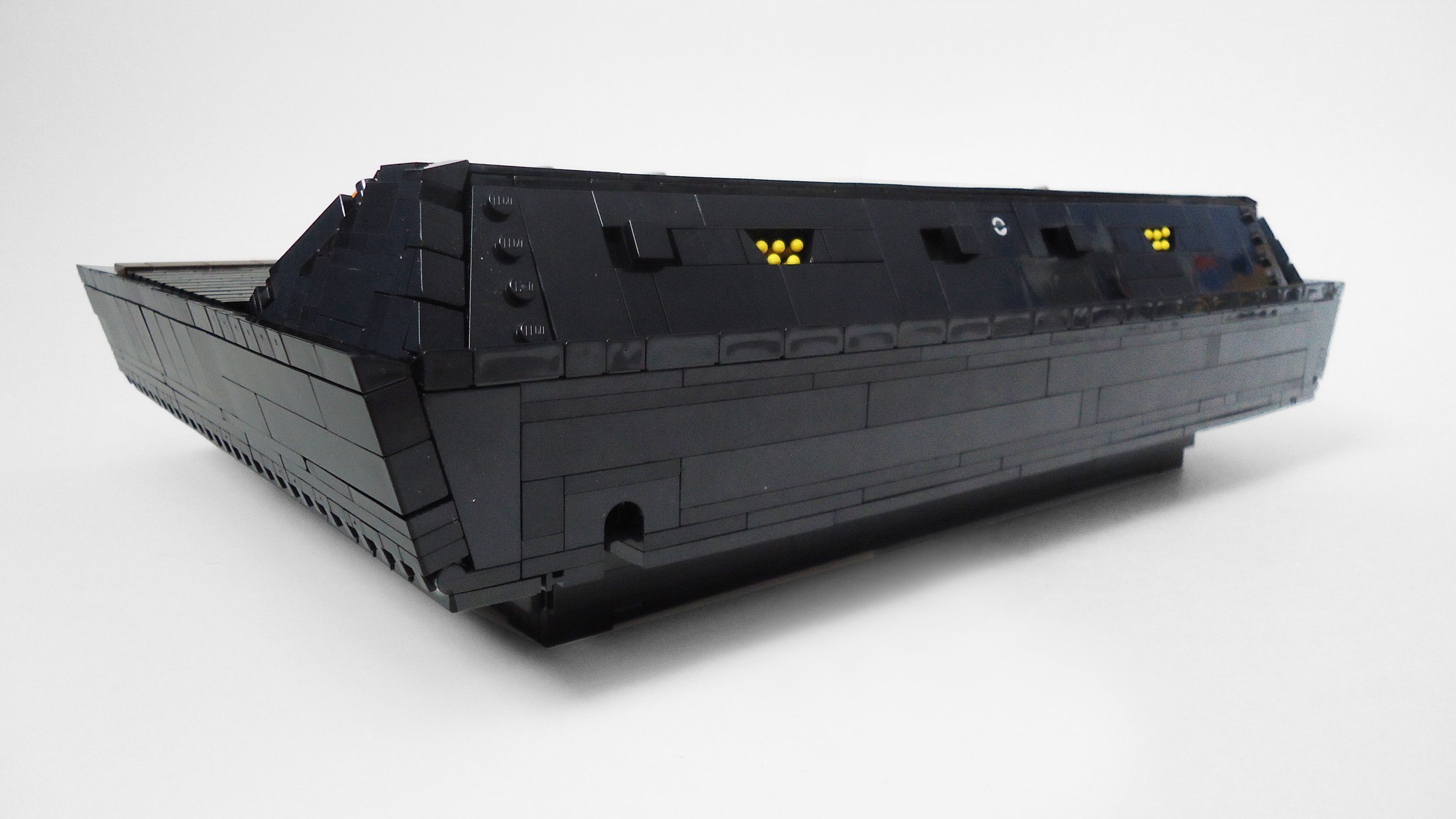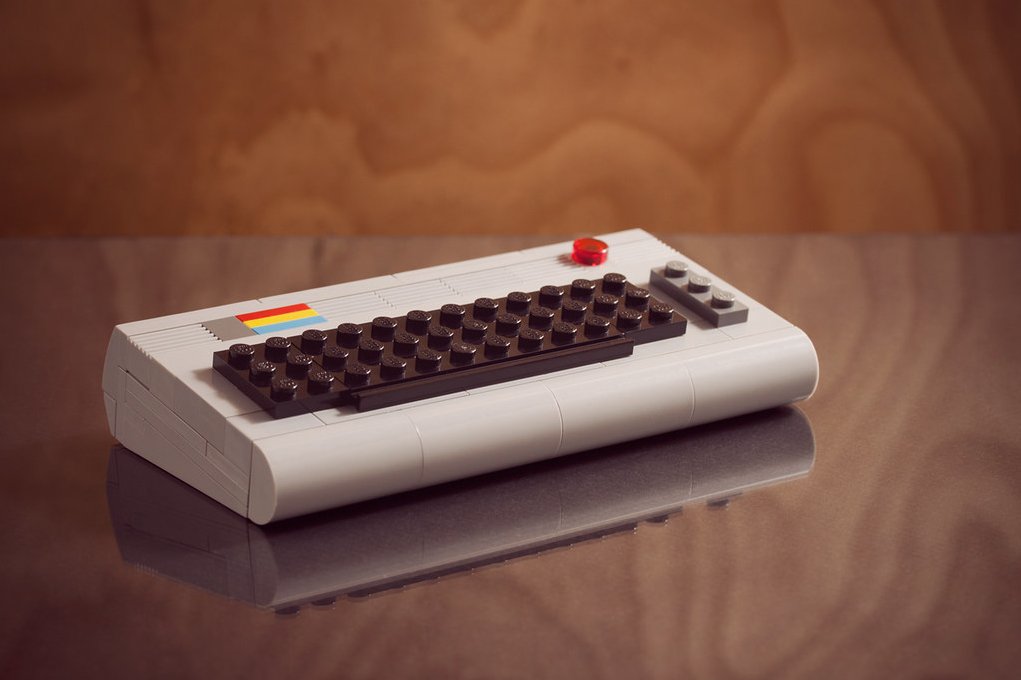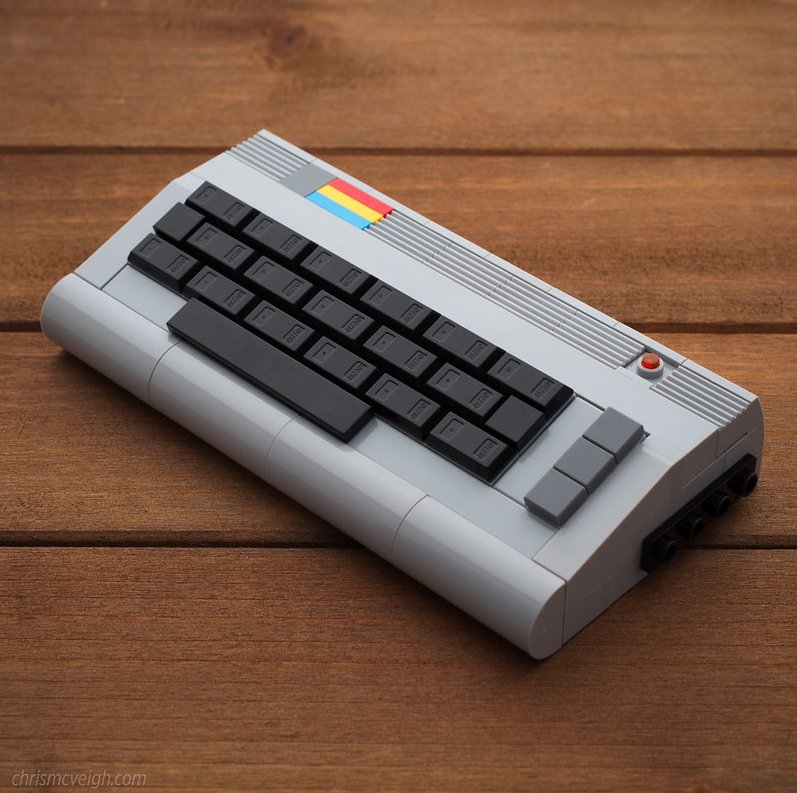Ready, Player One? Classic LEGO Game Consoles
/Pac-Man, by Paul Hetherington - link to video
After waxing nostalgic about “The Karate Kid” in my last article, it had me thinking back to the “old school” video game arcades of my youth in the 1980s.
Back then it was all about “Pac Man Fever” and who could mash those buttons the quickest in player-vs-player games. We’d plop down a stack of quarters to ward off others wanting to play while we tried to keep the dream alive of entering our initials atop those high score lists. There was no careful MMO multi-player raid strategy planning way back then. It was all “Ready, Player One?”, the count-down to start, and then full-on “LEEEEEEEEEEEEEROY JENKINSSSSS!!!!!” mode!
The big problem with gaming arcades as a kid is that you needed someone with a car to take you there - unless you were lucky enough to live within the range of one by using more independent modes of transportation (skateboards, bicycles, walking…). Gosh. If there was only a way to bring those video games home with us so that we could play them every day after school… Fortunately, we didn’t have to wait too much longer for an answer, as the age of home video game consoles had arrived. There are many who have built LEGO replicas of these now dusty 1st-gen and 2nd-gen relics (which are about as Mundane as it gets… hint, hint.). We thought we’d take a nostalgic look back at some of these old video game consoles and their MOC tributes.
Atari - Home Pong
In the beginning of course, there was Atari… or so I always thought. Doing some research, I learned that it was actually the Magnavox Odyssey that was the first to arrive on the scene nearly 50 years ago. I learned that the Odyssey was exclusively sold through Magnavox television dealers in the hope that consumers would visit their stores to demo the first-ever home video game console product. Over its three years in production, the company sold 350,000 Odysseys in total worldwide. However, if a gaming console has no new games to play on it (or friends who have it too), will it really catch on? And more importantly, if no one has ever built a MOC out of it in LEGO, did it ever actually exist? I’d say the verdict is clear.
Soon after that “supposed” Odyssey was released came the home version of Atari's game "Pong". Although the console was pretty much designed to play just one game, their “any TV can play it” marketing was certainly a step in the right direction (the Magnavox Odyssey could be played on any TV too, but its “only available at Magnavox stores” marketing gave a different perception). Home Pong’s reception gave an early indication of how much demand there would be for home video game consoles in the years to come. Quy Chau built this tribute to the Home Pong console back in 2013. (And hey Gwyneth – Quy Chau has also faithfully built a Moog Synthesizer that you can include in your next piano round-up).
As for the game of Pong itself, it was a fairly basic version of table tennis (aka ping-pong); Just hitting a ball back and forth with a paddle, and trying to get it past your opponent. The winner was declared once a player reached the required number of points or their opponent quit out of boredom (“I quit. Let’s go play with LEGO instead!”). If the game Pong was a Nerdly, it would kind of look like this rendition by Anthony SÉJOURNÉ below.
Atari 2600
It wasn’t too long after Home Pong that Atari released the Atari 2600 (branded as the Atari Video Computer System [VCS]) to the masses in 1977. When people said they had an “Atari” growing up, this was the gaming console that they were referring to. And when people say “do you remember that Atari console someone built out of LEGO?” invariably it is DξβS version that he built back in 2011 that they are referring to.
In 2020, -derjoe- built their own version of the Atari 2600 (VCS), complete with power cords and a couple classic games to go along with it. Combat was the one that came standard, but the home versions of Space Invaders and Pitfall were classics too. I was always partial to Asteroids myself.
Gilcelio chagas had his own Atari game favorites. After coming back home from BrickCon in 2012, he was inspired to build a video game mosaic of H.E.R.O. (an acronym standing for Helicopter Emergency Rescue Operation). It was a single-player video game published by Activision for the Atari 2600. In that game, the player uses a helicopter backpack and other tools to rescue victims trapped deep in a mine.
But let’s say you want to build a minifig-scale tv-room habitat of those early gaming days. Well, Kristi had those same thoughts back in 2013 and came up with these custom minifig scale joystick controllers, along with a matching console. Wouldn’t those look great sitting in front of that retro TV prize from BrickStuff?
Chris McVeigh is another builder (now LEGO designer) well known for scaling down retro video game consoles and home personal computers too. He has built a couple versions of the Atari 2600 console. First is this one with the joysticks being built 3x3 studs in size.
Chris then scaled them down further to be 2x2 studs, but also kicked the nostalgia up a notch by completing the scene in all its wood-paneled, rabbit-eared, earth-toned living room glory!
The Other Home Computing Gaming Systems
So if gaming consoles with faux wood grain weren’t your thing back then (or wood-paneled living rooms for that matter), then what were your options? Well, early home computing systems started coming onto the scene around that time as well. For many, it was much easier to justify buying something that you could do other things on besides play games (like BASIC computer coding your own programs, and such). Some of the common ones were made by Texas Instruments, Radio Shack (under the Tandy brand name) and Commodore. Some had game cartridge slots on the sides, but many still had games you would load by actual audio cassette tapes. Usually after the 30 minutes it took to load up a game that way, your parents would tell you that dinner was ready and you had to turn everything off 😩.
There aren’t too many MOC tributes to these other 1st and 2nd Gen game systems, but they did exist. Honestly, there wasn’t much distinctive about them design-wise anyways. Basically, they were a chunky keyboard with a cartridge slot on the side, and some venting up top to cool the PC board (in all its 64-bit glory… this was waaaaay back before kilo, mega, giga, and terabits came into the picture). Chris McVeigh’s versions of the Commodore 64 probably tell you all you need to know about how they looked.
And that is where we will end this look back down the memory lane of video game consoles. The 3rd generation consoles is where things start to really pick up, with Nintendo and Sega finally hitting the scene. You will find many more MOCs devoted to that generation of consoles, and even an official LEGO set or two. Until then, play well!
Which classic gaming console was your favorite? Let us know in the comments below.
Do you want to help BrickNerd continue publishing articles like this one? Become a top patron like Charlie Stephens, Marc & Liz Puleo, Paige Mueller, Rob Klingberg from Brickstuff, John & Joshua Hanlon from Beyond the Brick, Megan Lum, and Andy Price to show your support, get early access, exclusive swag and more.

